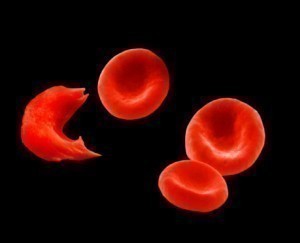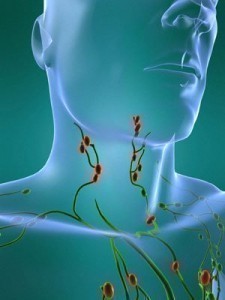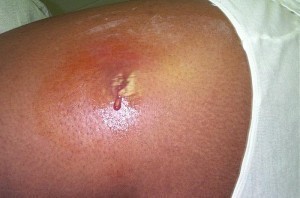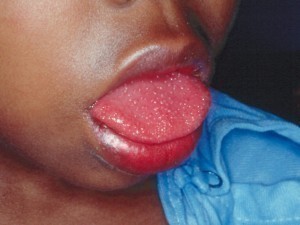Sickle Cell Disease
Definition
Sickle cell disease is a blood disorder that affects the red blood cells. This disease is found in people that have red blood cells that contain mostly hemoglobin S, which is an abnormal type of hemoglobin.
Normal blood cells are shaped like a donut taking a circular-shape and this is considered normal, where as a sickle-shaped red blood cell takes on a crescent shape and this proves difficult for this type of abnormal blood cell to pass the small blood vessels. When this happens the sickle cell shape blood cell blocks the small blood vessel hence resulting in low blood flow to that part of the body.
Sickle cells do not last as long as normal red blood cells.
Abnormal blood flows to a particular tissue, will result in that tissue becoming damaged and this is what leads to complications of Sickle cell disease.
Sickle Cell Disease also called Sickle Cell Anemia is mostly common in people of West and Central African descent.
Symptoms
- Fatigue and Anemia

- Pain Crises
- Bacterial Infections
- Splenic Sequestration (this is the sudden pooling of blood in the spleen).
- Liver Congestion
- Lung and Heart Injury
- Leg Ulcers
- Eye Damage
- Dactylitis (swelling and inflammation of the hands and/or feet) and sometimes arthritis.
- Aseptc Necrosis and Bone Infarcts – this is the portion of the bone that is dead.
Causes Of Sickle Cell Disease
Hemoglobin S – S standing for Sickle inside their red blood cells, identifies people with Sickle Cell. Sickle cell is a heredity disease passed done via the “autosomal recessive inheritance”, where basically what this means is that, in order for an offspring to get the full blown sickle disease, both parents would have had to have the disease in their genes.
If the trait is present in one parent, this parent now becomes a potential carrier of the disease, that’s why tests are normally carried out to see if both mother and father have this “defective for of gene” and if so, going through with the pregnancy is normally discouraged.
The difference between the sickle trait and the sickle disease is that the disease carries only Hemoglobin S in the red blood cell. While persons carrying the trait, their bodies produces normal hemoglobin and sickle cell hemoglobin (the defective form of the gene).
If both parents possess the trait there is a:
- A 25 percent possibility of the offspring being unaffected and coming out with perfectly normal hemoglobin (Hemoglobin – A).
- A 25 percent chance of having a child with sickle cell anemia/disease.
- A 50 percent chance that the child will become a sickle trait carrier
Treatment For/Of Sickle-Cell Disease
Treatment for Sickle cell disease varies as a lot of factors are taken into consideration before treatment can be administered.
Factors for Sickle treatment includes
- The patient’s age and overall health status and medical history of the patient.
- The extent of the disease
- The patient’s tolerance with certain medications. This ability to cope with the procedures and therapy.
- The patient’s opinion and preference.
When dealing with Sickle cell disease treatment, early diagnosis and the prevention of possible complications is very critical.
Sickle cell treatment could/may include
- Pain medications – this is for the pain crises associated with the disease.
- Sufficient intake of water daily (8-10_ glasses).
- Blood transfusions – this is necessary for the anemia and to prevent a stroke. It is also used to treat chronic pain, acute chest syndrome and splenic sequestration.
- Penicillin – this prevents infections.
- Folic Acid – this prevents the anemia from reaching the severe stages.
- Hydroxyurea – this recently developed medication is made to help the need for frequent blood transfusions.
- Bone Marrow Transplant
For more information on Sickle Cell Disease read:






